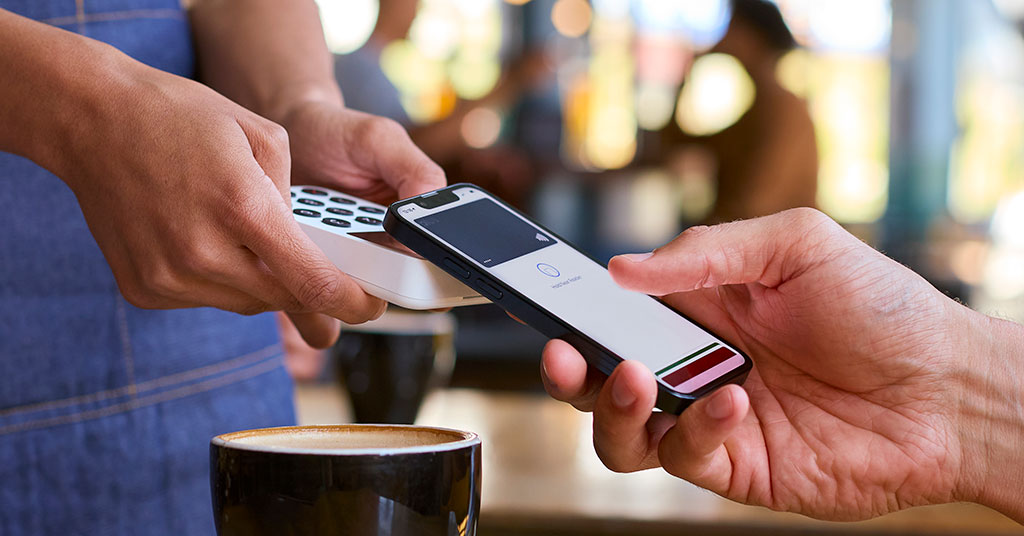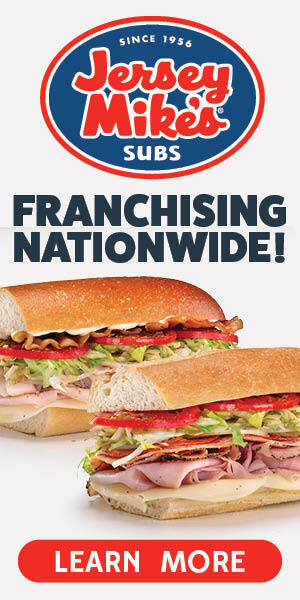What trends are you seeing in changes to menus and consumer tastes/preferences?

When it comes to meeting changing consumer tastes, restaurant owners and operators have always scrambled to keep up—hoping to spot emerging trends before their competitors do—and adapting their menus, operations, and pricing accordingly, in an attempt to catch the next wave. But it’s not enough just to identify new trends. That’s when the hard work of creating new products and customer experiences begins.
“Consumer habits are evolving rapidly due to technology, economic conditions, and lifestyle changes. Successful restaurants don’t just react—they anticipate, adapt, and innovate,” says a post from Brand to Table. The most successful brands, it says, are adapting to today’s changing consumer habits by focusing on the following:
- Convenience and technology integration
- Sustainability and ethical sourcing
- Health-conscious options and customization
- Memorable dining experiences and social engagement
- Personalized customer connections and community-driven growth
Here’s another take, from URM Magazine, on how chain restaurants are adapting to consumer demands:
“Today’s diners expect more than just good food—they seek experiences that reflect their values, cultures, and dietary needs.” These shifts, the article concludes, is transforming how chain restaurants operate, pushing them to prioritize the following:
- Menu diversity: Offering options that cater to various cultural preferences and dietary restrictions
- Sustainability: Emphasizing eco-friendly practices to attract environmentally conscious diners
- Personalized experiences: Leveraging technology to create tailored interactions
Technology, of course, plays an important role here, with ever greater capabilities for gathering and analyzing customer data. But in today’s online, social media–driven world, the pace of change has accelerated, making it even harder to keep up. (Consider the recent spate of restaurant industry bankruptcies in this data-heavy report from oysterlink.com, covering 2020–2025.)
There’s more to it, of course. There always is. But these are key points in the challenge to adapt, not die. Other factors include: a shift to smaller portions, the result of GLP-1 type drugs like Ozempic; plant-based menu additions; take-out and delivery options; testing AI tools for hyper-localization and personalization; and using today’s treasure trove of data to help navigate the changing seas of consumer preferences.
Now let’s see what these multi-unit restaurant franchisees have to say below.
Like what you see here? Tell us! Already subscribed? Tell your friends!
Have more questions? If you have a topic you’d like to see in a future issue, send us an email.
Franchisee Bytes: How is social media affecting your business?
MITCH COHEN
Company: CEO, PerformMax Franchisee Advisors
Brands: 8 of 10 Jersey Mike’s open, 2 more coming; 3 of 10 Sola Salon Studios open, 4th under construction
Years in franchising: 40
Mitch Cohen is the Incoming Chair of the 2026 Multi-Unit Franchising Conference. He is a board member of the IFA and of the Multi-Unit Franchising Conference. He is the CEO and founding partner of PerforMax Franchisee Advisors.
What I’m seeing in menu trends is a little bit more on the lighter side. At our Jersey Mike’s, we just introduced chicken salad, which is quickly becoming one of our top-selling sandwiches. We’re also looking at our beverages, adding energy drinks, flavored water, and reduced sugars.
For brands I consult with outside of Jersey Mike’s (through Performax Franchisee Advisors, with my two multi-unit franchisee partners, Tamra Kennedy and Tom Baber), I’m seeing a trend toward smaller portions. With the growing trend of weight- loss supplements, I’m seeing other businesses being asked for smaller portions.
FRANKIE RADOCHONSKI
Brands: 3 Pop’s Beef locations in the Chicagoland region
Years in franchising: 4.5
The two questions I get asked most often in my restaurants are: “Do you have anything vegetarian or gluten-free?” and “Do fries come with that?” Over the last five years, there’s been a clear shift toward healthier options and value. Big chains are bringing back value menus and slowly adding more health-forward items.
I’m also seeing a major push toward eco-friendly packaging: paper straws, recycled takeout containers, and reusable cups. It’s often more cost-effective for operators and, aside from paper straws, most customers don’t mind the switch.
The last trend I’ve seen in menus are chicken sandwiches and smash burgers. These two have taken a cornerstone position in American food, and for good reason They are delicious! Chains have gone to war over who has the best chicken sandwich, and I have seen more smash burger places popping up than ever before.
JAKE LOPEZ
Company: Owner, Jeremiah’s Italian Ice
Brands: 3 Jeremiah’s Italian Ice
Years in franchising: 6
As a multi-unit Jeremiah’s franchise owner, I’ve seen firsthand how consumer tastes and menu expectations have evolved in recent years. Today’s guest is looking for more than just a sweet treat—they’re seeking novelty, customization, and feel-good experiences they can share. That shift has directly informed how Jeremiah’s approaches its menu, and it’s part of what makes this brand such an exciting concept to grow with.
At Jeremiah’s, we’ve always led with bold, unexpected flavors, from Key West Tropical and Scoop Froggy Frog to our signature Jelati combinations that layer Italian Ice and rich soft ice cream. In recent years, we’ve leaned into social media trends to inform our menu changes. We saw that freeze-dried treats were taking over our feeds, and even boba tea was popping up all over the place. So earlier this year, we offered Skittles POP’d and Hoppin’ Boba Layer-Ins on our menu to create new textures and flavors we knew our guests would love.
But innovation doesn’t stop at flavor. We’re also seeing a big shift toward grab-and-go indulgences and take-home treats. People want convenience without compromising quality. That’s why I’m so excited about our new Hop-Away Treats line, which includes our new signature Jelati Cakes, which are a layered ice cream cake version of our Jelati Flavorites; OREO Ice Cream Sandwiches, which blend nostalgia with next-level flavor; and Hop-and-Go Quarts, which bring the Jeremiah’s experience home in a format perfect for sharing. As an operator, I love seeing families walk out with these because I know it means the Jeremiah’s experience is extending to birthdays, pool parties, and even just movie night on the couch. These additions don’t just bring joy to our guests, they also create a valuable new incremental revenue stream for us that drives add-on purchases and supports higher ticket averages, especially during off-peak hours.
In partnership with the Jeremiah’s HQ team, we, as franchisees, are always looking for ways to maximize our profitability without overcomplicating operations. The Hop-Away Treats products are grab-and-go, prepackaged, and designed to be produced and sold with minimal added labor. That kind of smart innovation means my team can focus on creating memorable moments with guests in-store, while these products help us continue serving outside the four walls too. From a business standpoint, they expand our sales opportunity because they don’t require guests to be in-store to generate revenue, and they help extend our brand presence into homes, parties, and other celebratory occasions.
Further, these additions reflect a larger trend I’m seeing across food service: the demand for personalization. Our menu is designed for maximum creativity, as guests can mix and match flavors, layer them however they want, and decide what form they want them in—allowing them to build a treat that’s uniquely theirs. One of my favorite parts of owning this brand is watching a guest light up as they create something that feels like “their” signature treat. It makes the visit feel interactive and personal, and that level of customization is something I don’t see going away anytime soon.
When it comes to evolving consumer taste and preference, more than anything, a brand’s menu should make people feel connected—to the food and to the businesses serving it. At Jeremiah’s, we take that seriously. Our guest experience is just as important as our product lineup. For me, it’s not just about selling a dessert, it’s about creating those small moments of joy that people carry with them long after they’ve left our store. Whether it’s a new Flavorite or a seasonal rollout, we’re always thinking about how to create moments that stick with people long after the last bite.
In a competitive frozen dessert landscape, our ability to offer multiple paths to purchase while offering a mix of menu innovation, craveable quality, and connection-driven service is what sets us apart, keeps our guests coming back, and grows our bottom line.
FRANCHISEE BYTES
How is social media affecting your business?
Social media has evolved into a vital tool for understanding customer sentiment and tracking brand perception. Through our franchisors’ partnerships with specialized social media management teams, we monitor feedback, reviews, and engagement. While the franchisor manages direct interactions with customers online, they escalate any critical issues to us for resolution. We’ve seen how social media amplifies word-of-mouth marketing, so we prioritize maintaining a consistent, positive presence online. It’s a powerful asset in building relationships with both new and loyal customers.
—Jacob Webb, Franchise Owner, MPUT Holdings LLC, which operates 22 Marco’s Pizza and 4 Tropical Smoothie Cafe locations. He’s been in franchising for 11 years.
Social media has been a game-changer for our brand. Dave’s was built on digital buzz, and we continue to embrace all platforms to engage our audience. We have been able to build a passionate fan base with our huge followings on TikTok and Instagram.
—Lawrence Kourie is Owner-Operator of 22 Dave’s Hot Chicken restaurants. He’s been in franchising for 12 years.
Social media helps us reach audiences, such as customers and potential employees, who would otherwise be difficult to reach. But it is also a platform that thrives on negativity, and one bad customer experience that goes viral can damage a brand and its employees. It’s a blessing and a curse, and handling both of those is a delicate balance.
—Mike Kulp is CEO of KBP Brands, which operates 828 KFC, 119 Arby’s, 85 Sonic, and 56 Taco Bell locations. In 2016, he served as Chair of the Multi-Unit Franchising Conference. He’s been in franchising for 26 years.
It has definitely changed the way our franchisor spends ad dollars. There is significant purchasing at the national level for social media advertising. The emergence of social media as the consumers’ primary vehicle for information has devalued traditional media channels. As a result, the competitive advantages of being a large brand have been blunted. Small brands are now able to do hyperlocal social media advertising that often gets more exposure than large brands get. They no longer need to spend millions on TV ads to receive visibility. An empowered crew member with an iPhone and TikTok can make a viral advertisement even if you don’t want them to.
—Bryce Bares, Franchise Owner, QSR Services LLC, which operates 30 Dunkin’ and 1 Baskin-Robbins locations. He’s been in franchising for 13 years.
Facebook has been our primary promotional platform, and while it hasn’t hurt us yet, I’ve noticed declining user engagement as more companies enter the digital space. I’m looking forward to exploring other available platforms to maintain our momentum and stay ahead of emerging trends.
—Yunus Shahul, with his brother, Thameem, is owner of Smartfoods Group, which operates 24 Cousins Maine Lobster units and 1 German Doner Kebab. He’s been in franchising for 7 years.
Social media can be jet fuel for your business. Organic marketing with guests posting their self-generated content is as good as word-of-mouth endorsements. Mastering social media has been key for our growth brands.
—Alex Karcher is Operating Principal of JCK Restaurants, which operates 61 Carl’s Jr., 11 Jersey Mike’s, 8 The Human Bean, 8 Dave’s Hot Chicken, and 1 Hawaiian Bros. He’s been in franchising for 14 years.
We advertise on social media just like any other business. It is a component of our market strategy and can be very successful in most markets.
—Nick Crouch is Co-Winner of the 2025 Single-Brand Leadership MVP for achieving leadership with a single brand. He is Co-CEO of Dyne Hospitality Group, which operates 118 Tropical Smoothie Cafes. He’s been in franchising for 13 years.
It’s a giant part of our world. “Phone eats first” is a motto to live by. If you aren’t proud of a bowl to be featured on social media, you shouldn’t be serving it.
—Carrie and Josh Ayers are the 2025 Veteran Entrepreneurship MVPs for outstanding performance, leadership, and innovation by military veterans. They operate 6 Playa Bowls and have been in franchising for 5 years.
Largely. Wingstop is very edgy, and our customers are generally youthful.
—Chad Given is Brand President of Sizzling Platter, which operates 361 Little Caesars, 107 Little Caesars Mexico, 185 Wingstop, 92 Jamba, 33 Jersey Mike’s Subs, 31 Dunkin’, 7 Sizzler, 5 Red Robin, and 1 Cinnabon. He is the 2025 Mega-Growth Leadership MVP for achieving excellence in growth and expansion. He’s been in franchising for 25 years.
In most locations, it has been a positive lift in sales by attracting new guests who may not even know our brand or what we serve, which is fresh flame-grilled chicken marinated daily in secret herbs and spices.
—Phong Huynh is the 2025 American Dream MVP for achieving remarkable success in his new country. He is Co-Owner of Fuego Investments, which operates 30 El Pollo Loco restaurants. He’s been in franchising for 15 years.
Greatly. Monitoring social media chatter and online review feedback have been priorities for us. We take every comment into account and use it to make our locations better.
—Yousuf Nabi is Owner & CEO of Gotham IP Inc., which operates 10 Mrs. Fields, 10 Sbarro, and 4 TCBY locations. He’s been in franchising for 5 years.
It’s increasing brand awareness with every view. The more a person sees a brand or product, the more likely they are to visit.
—Jerome Johnson is a Franchisee at John Cove Management and Jbar Inc., which operates 10 Dunkin’, 4 Sonic Drive-In, 4 Baskin-Robbins, and 1 Jersey Mike’s. He’s been in franchising for 21 years.
Our social media ad spending continues to increase as we receive measurable results.
—James Brajdic is co-winner of the 2025 Single-Brand Leadership MVP for achieving leadership with a single brand. He is president of Customer Maniacs and Green Bay A Dub, which operates 13 A&W restaurants. He’s been in franchising for 23 years.
Share this Feature
Recommended Reading:
| ADVERTISE | SPONSORED CONTENT |
FRANCHISE TOPICS
- Multi-Unit Franchising
- Get Started in Franchising
- Franchise Growth
- Franchise Operations
- Open New Units
- Franchise Leadership
- Franchise Marketing
- Technology
- Franchise Law
- Franchise Awards
- Franchise Rankings
- Franchise Trends
- Franchise Development
- Featured Franchise Stories
| ADVERTISE | SPONSORED CONTENT |

$300,000
$500,000





 The multi-unit franchise opportunities listed above are not related to or endorsed by Multi-Unit Franchisee or Franchise Update Media Group. We are not engaged in, supporting, or endorsing any specific franchise, business opportunity, company or individual. No statement in this site is to be construed as a recommendation. We encourage prospective franchise buyers to perform extensive due diligence when considering a franchise opportunity.
The multi-unit franchise opportunities listed above are not related to or endorsed by Multi-Unit Franchisee or Franchise Update Media Group. We are not engaged in, supporting, or endorsing any specific franchise, business opportunity, company or individual. No statement in this site is to be construed as a recommendation. We encourage prospective franchise buyers to perform extensive due diligence when considering a franchise opportunity.